Maskne, a combination of "mask" and "acne," refers to skin problems caused by wearing face masks for extended periods of time. It has become increasingly common as masks have become more widely used to prevent the spread of infectious diseases such as COVID-19. Maskne most commonly manifests as pimples, blackheads, and whiteheads on the mask-covered areas of the face. We all know the proper mask-wearing routine. Firstly, make sure you have a few masks handy so you don’t end up reusing only one mask. To avoid rashes, use a mask with a soft fabric that is neither too tight nor too loose. Cleanse, tone, and moisturise your face before and after wearing a mask. But did you know that wearing face masks can still cause acne, skin irritation, and other skin concerns?
Face masks can really cause acne!
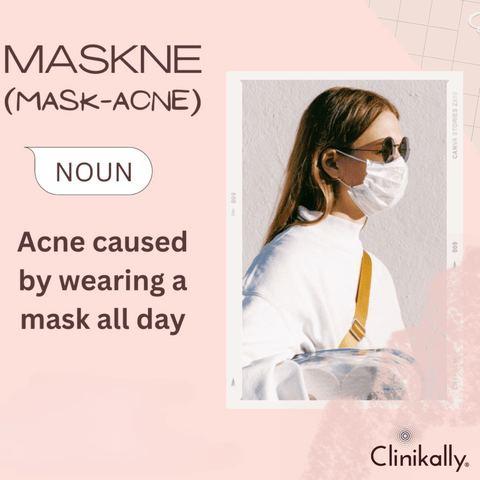
Yes, face masks can cause acne, which is commonly referred to as "maskne." This is due to friction, heat and humidity, continuous wear, pressure and occlusion, and microbial contamination. While masks may irritate acne, they are also crucial for preventing the spread of contagious illnesses. As a result, striking a balance between wearing masks for safety and taking preventive and control measures, as indicated in the previous response, is crucial. Contacting a dermatologist if you have a persistent or severe mask might help you build a more tailored treatment strategy. There are several reasons why wearing a mask for an extended period of time may have an effect on the covered portion of our face.
-
A tight mask could cause rashes on the bridge of the nose and behind the ears due to friction. Although it is forbidden to remove the mask in public or in company, you may do so when alone or at home to allow your skin to breathe.
-
A rough fabric could irritate our skin. The mask's material should be soft, preferably 100% cotton.
-
Make sure you use a mild detergent for washing your face, as the wrong detergent can also cause irritation of the skin.
-
The weather could also aggravate the condition. Excessive dryness or humidity may have an adverse effect on the skin undercover.
Skin Assessment

Skin assessment is an essential step for determining an individual's overall skin health and condition. Dermatologists and aestheticians frequently use it to diagnose skin problems, develop treatment plans, and track progress. A comprehensive skin examination includes the following components:
-
History Taking: Obtaining information regarding the patient's medical history, such as previous skin disorders, allergies, a family history of skin disease, and any current drugs or therapies
-
Visual Inspection: Examine the look, texture, color, and any obvious abnormalities of the skin. This includes assessing various body parts, such as the face, neck, arms, legs, and chest.
-
Assessment of Lesions: Identifying and documenting all skin lesions, including moles, freckles, birthmarks, rashes, warts, and sores. Each lesion's characteristics, such as size, shape, color, and texture, are recorded.
-
Palpation: Touching the skin gently to evaluate its texture, warmth, wetness, and turgor (elasticity). This can aid in the detection of abnormalities such as dryness, dehydration, or abnormal growth.
-
Skin Turgor Evaluation: Assessing the skin's ability to return to its normal state after being pinched or pulled. Poor skin turgor can indicate dehydration or other underlying health issues.
-
Sensitivity Evaluation: Evaluating the patient's sense of touch, temperature, and pressure on the skin. Numbness or altered sensations may indicate nerve or neurological problems.
-
Skin Integrity Evaluation: Examining the skin for wounds, cuts, bruises, or signs of skin damage. This is especially important for patients who are at risk of developing pressure ulcers or skin breakdown.
-
Skin Hydration Evaluation: Evaluating skin hydration to detect dryness or excessive oiliness. Skin hydration is essential for good skin health.
-
Skin Elasticity Evaluation: Testing the skin's ability to snap back into place when gently pulled. Reduced elasticity can be a sign of aging or certain skin conditions.
-
Skin Allergies or Sensitivities Evaluation: Identifying any allergies, known or suspected, to specific products, materials, or ingredients that may cause skin reactions.
-
Hair and nail evaluation: Examining the condition of one's hair and nails for abnormalities or infections.
-
Documentation: Detailed documentation of findings, including photographs of any significant skin conditions for future reference and comparison.
A thorough skin examination is necessary for diagnosing and managing skin conditions, tracking changes over time, and developing personalised treatment plans. It can assist healthcare professionals and individuals in understanding the state of their skin and addressing any concerns, ranging from common issues such as acne or eczema to more serious conditions such as skin cancer. If you have specific skin concerns, it is best to consult with a dermatologist or healthcare provider for a professional assessment and advice.
The science behind mask-induced breakouts
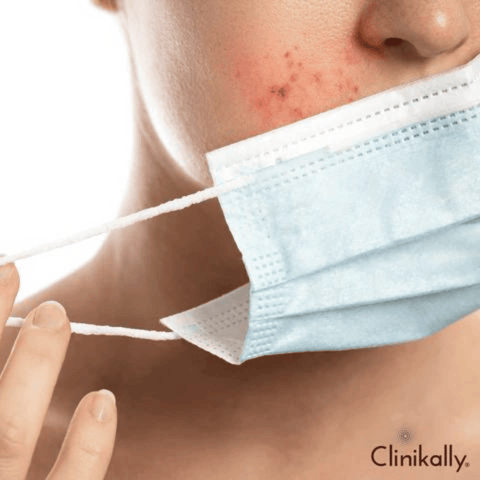
The science behind mask-induced breakouts, also known as maskne (mask acne), is complex and involves numerous factors. The following are the primary mechanisms and contributing factors:
-
Friction and Pressure: Constant rubbing and pressure from the mask against the skin can cause irritation and inflammation. This friction can damage the skin's protective barrier, leaving it vulnerable to acne-causing bacteria and other pathogens.
-
Moisture and humidity: When wearing a mask, a warm and humid microenvironment is created between the mask and the skin. This trapped moisture can cause excessive sweating and sebum (skin oil) production, clogging pores and encouraging acne development.
-
Bacterial Growth: Bacteria, particularly Propionibacterium acnes (P. acnes), thrive in the warm, moist environment created by a mask. These bacteria can multiply and cause inflammation and infection, which contribute to acne.
-
Skin Occlusion: A tight-fitting mask can obstruct hair follicles and sebaceous glands, preventing sebum from reaching the skin's surface. This sebum buildup, combined with dead skin cells, can cause clogged pores and pimple formation.
-
Allergens and Irritants: Masks can accumulate allergens such as pollen, dust, and pet dander, which can cause allergic reactions, skin irritation, and breakouts when in contact with the skin.
-
Product Transfer: Products used for skincare, makeup, and lotions may seep onto the inside of the mask. These products have the potential to clog pores and cause skin irritation or acne.
-
Reduced Oxygen Exchange: Prolonged mask use can reduce the exchange of oxygen between the skin and the surrounding environment. Lack of oxygen may weaken the skin's natural defences and contribute to acne development.
-
Stress: The ongoing pandemic's stress and mask-wearing can cause hormonal imbalances that affect sebum production and can trigger or exacerbate acne.
These elements must be addressed in order to prevent and manage mask-induced outbreaks. As indicated in earlier replies, proper skincare, hygiene, and mask-wearing practises can help reduce the incidence of masks. These methods are intended to prevent friction, maintain skin health, and eliminate the elements that contribute to acne formation. In more severe situations, contacting a dermatologist might provide further treatment choices for mask-related acne, such as topical medicines or oral antibiotics.
Types of acne caused by face masks
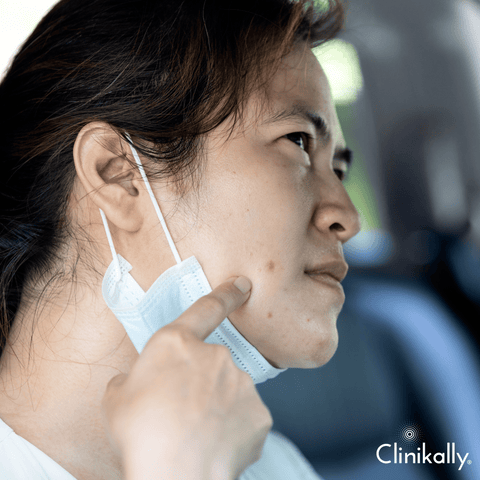
Using face masks can aggravate acne of all kinds. The most common types of acne caused by face masks, also known as "masks," are as follows:
-
Acne Vulgaris: The most common type of acne, which causes whiteheads, blackheads, papules, pustules, and cysts. Maskne can aggravate pre-existing acne vulgaris or cause new acne lesions, especially in areas where the mask is applied.
-
Folliculitis: A bacterial or fungal infection causes inflammation of the hair follicles. Wearing masks can increase the risk of bacterial growth and folliculitis by creating a warm and humid environment. Folliculitis is characterised by red, itchy pustules.
-
Acne Mechanica: Acne caused by mechanical friction or pressure on the skin. Wearing a mask can cause constant friction and pressure, resulting in acne mechanica. It may manifest as small pimples or pustules.
-
Perioral Dermatitis: Perioral dermatitis is a skin condition characterised by red, bumpy, and sometimes pus-filled rashes around the mouth, nose, and chin. Mask use can aggravate perioral dermatitis, making it more difficult to manage.
-
Rosacea Flare-Ups: For people who have rosacea, wearing a mask can cause flare-ups of this chronic skin condition. Rosacea is characterised by flushing, redness, and the appearance of small, visible blood vessels. It can also cause the formation of acne-like papules and pustules.
-
Irritant Contact Dermatitis: This illness is caused by skin irritation caused by contact with an allergen or irritant. Irritating contact dermatitis can be caused by the materials or detergent used in masks, as well as the friction and wetness that form beneath the mask. It can result in red, itchy, and dry skin, which is frequently accompanied by small pimples.
-
Allergic Contact Dermatitis: Some people may become allergic to materials in their masks, such as dyes or synthetic fabrics. This can cause an itchy, red rash as well as pimple-like bumps.
-
Pernio (Chilblains): Prolonged exposure to cold and humidity can cause a skin condition known as perio, or chilblains. In some cases, wearing a mask can cause localised chilblains, which look like small red or purple bumps on the nose or cheeks.
Useful skincare tips if you wear face masks
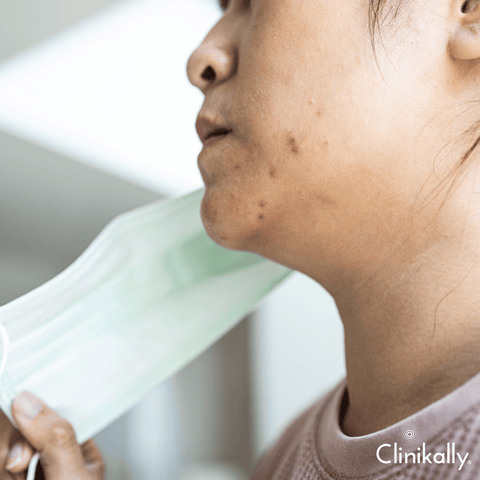
Wearing face masks for extended periods of time can have an effect on your skin. Here are some helpful skincare techniques for preventing and managing mask-induced skin troubles, sometimes known as "mask" or mask-related acne:
-
Wash your face regularly and use a light moisturiser at all times. If you have dry skin, use a rich cream.
-
Apply a light sunscreen lotion or cream, preferably mineral-based. Be aware that certain chemical ingredients in sunscreen may wear down the integrity of rubber or elastic materials on the mask
-
Avoid wearing heavy makeup, like foundation, under your mask. This may cause skin breakouts.
-
For those wearing cloth masks, make sure you wash them daily as per the guidelines to minimise bacteria growth that can cause acne.
Keep in mind that everyone's skin is unique, so what works for one person might not work for another. It may take some trial and error to find the best routine for preventing and managing mask-related skin problems. The key is to maintain good hygiene, moisturise your skin, and be patient while working to mitigate and prevent mask-induced skin problems.
Maskne is treatable, and here's how!
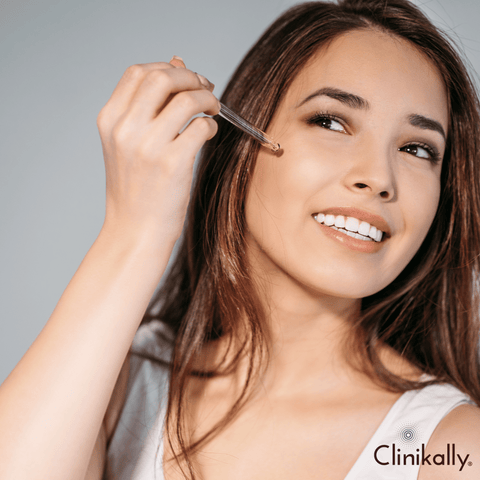
Maskne (mask-induced acne) is curable, and there are numerous treatment options available. Masks can be effectively treated by maintaining appropriate cleanliness, selecting the right products, moisturising, spotting treatment, visiting a dermatologist, preventing overwashing, mask maintenance, decreasing makeup use, remaining hydrated, mask selection, stress management, and living a healthy lifestyle. Many people have reported acne breakouts, irritation, and rashes on their faces as a result of wearing masks all the time. You can avoid this by washing or disinfecting a mask each time you wear it. Make sure you clean your face before and after putting on a mask, and don’t forget to rub in a gentle moisturiser so that your skin doesn’t dry out. Apply any calamine lotion to your rash after you have removed the mask and cleaned your face. Another great way to keep your skin nourished and hydrated is the Niacinamide serum for the face. It hydrates the skin to treat acne without any scarring. You can buy Clinikally's The Ultimate NIA Serum for face for free delivery to your doorstep.
Choosing the right fabric for your face masks
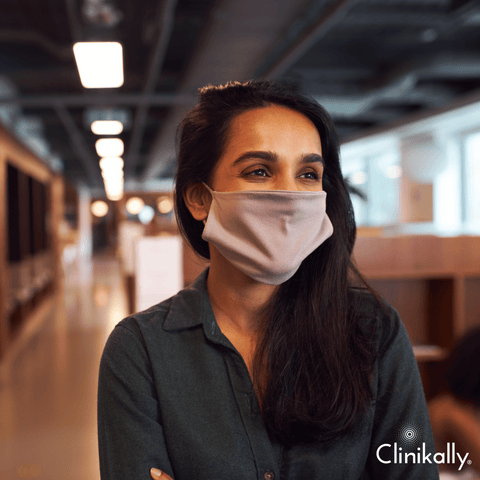
The fabric you use for your face mask is essential for its comfort, breathability, and effectiveness. Consider the following aspects when choosing a fabric for your face mask:
-
Breathability: Look for fabrics that allow air to flow freely through them. Breathable fabrics aid in the reduction of heat and moisture accumulation under the mask, which can contribute to masking. Cotton is a popular fabric because it is breathable and comfortable.
-
Multiple Layers: A multi-layered mask can provide better filtration and protection. Consider a two or three-layered fabric mask. The inner layer should be soft and comfortable against your skin, while the outer layers should be tightly woven for additional filtration.
-
Tight Weave: Select fabrics with a tight weave for improved filtration. Tight weaves are characteristic of fabrics such as cotton, linen, and muslin. You can examine the fabric by holding it up to the light; if you can see a lot of light passing through, the fabric is probably not tightly woven enough.
-
Natural Fabrics: Natural fabrics such as cotton and silk are frequently good choices. They are more comfortable, breathable, and less likely to irritate the skin than synthetic materials.
-
Moisture-Wicking: Look for fabrics with moisture-wicking properties to help absorb and evaporate sweat, lowering the risk of moisture-related skin issues. This feature is available in some athletic and performance fabrics.
-
Hypoallergenic: If you have sensitive skin, look for hypoallergenic fabrics like organic cotton, which are less likely to irritate or cause allergic reactions.
-
Avoid Synthetic Fabrics: Synthetic fabrics, such as polyester or nylon, can trap heat and moisture against the skin, increasing the risk of skin problems. If you go with a synthetic fabric, make sure it is moisture-wicking.
-
Layer with a Filter: If you want extra protection, you can use a mask with a pocket for a filter. You can use a disposable filter or a fabric insert made of HEPA vacuum bags, coffee filters, or non-woven interfacing.
-
Fit and Comfort: The fabric should be soft against your skin and well-fitting. Make sure the mask securely covers your nose and mouth without being too tight.
-
Easy to Clean: Consider how simple it is to clean and maintain the fabric. Reusable masks should be simple to clean and dry without causing significant degradation.
-
Prints and Colors: Select a fabric pattern or color that you like, but keep in mind that darker colors may show less staining from makeup or dirt.
Importance of mask hygiene

-
Disease Prevention: Masks are largely used to minimise the spread of infectious diseases such as COVID-19. Proper mask cleanliness helps to maintain the mask's effectiveness in catching respiratory droplets that may contain viruses or bacteria.
-
Self-Protection: Wearing a clean mask and practising good mask hygiene protects the mask wearer from inhaling potentially harmful particles or pathogens. It acts as a barrier, lowering the risk of infection.
-
Community Health: Mask-wearing is more than just personal protection; it is a community-wide effort to reduce disease spread. Keeping your masks clean protects those around you, especially vulnerable people who are at a higher risk of severe illness.
-
Prolonged Use: Proper mask hygiene extends the life of reusable masks, reducing waste and conserving resources. Regular cleaning and care can help masks last longer.
-
Comfort and safety: A clean mask is more comfortable to wear and is less likely to cause skin problems. Dirty masks can harbor bacteria and allergens that cause skin irritation.
-
Compliance: Promoting mask hygiene can lead to increased mask compliance. People who understand how to care for and clean their masks are more likely to use them correctly and consistently.
-
Reduced Environmental Impact: If not properly disposed of, disposable masks can contribute to environmental pollution. Proper mask hygiene reduces the need for frequent disposal, which helps the environment.
-
Cross-Contamination Prevention: Dirty masks can spread pathogens or contaminants to surfaces, hands, and other items. Proper mask hygiene reduces the possibility of cross-contamination.
Moisturising and barrier creams: a mask-wearer's friend
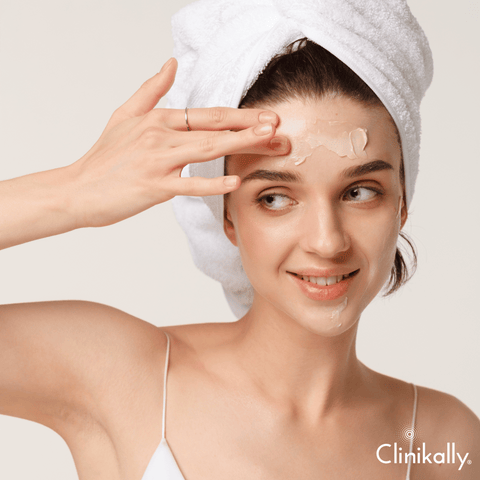
Moisturisers and barrier creams might be a mask-wearer's best friend when it comes to keeping healthy skin while wearing a mask. These solutions can assist in addressing the problems and potential skin issues that can occur from continuous mask use, such as dryness, irritation, and maskne. Here's how moisturising and barrier lotions can help mask wearers:
-
Prevent Dryness: Wearing a mask can trap moisture and heat, resulting in increased trans-epidermal water loss (TEWL) and potential skin dryness. Moisturising creams help to keep the skin hydrated, soft, and supple.
-
Barrier Function: Barrier creams form a protective barrier on the skin's surface, shielding it from friction, irritation, and mask contact. This barrier reduces the possibility of chafing and discomfort.
-
Reduce Friction: A well-moisturized and protected skin surface experiences less friction when in contact with the mask. This can help to prevent skin irritation and chafing.
-
Reduce Skin Irritation: Barrier creams can act as a barrier against allergens and irritants that may accumulate on the inner surface of the mask. They can also guard against contact dermatitis and allergic reactions.
-
Prevent Maskne: Some barrier creams contain ingredients that can help prevent mask-induced acne or maskne by forming a protective layer that reduces bacteria, oil, and dirt penetration into the pores.
-
Soothe and heal: If you experience skin irritation after using a mask, moisturising creams with soothing and healing properties, such as aloe vera or chamomile, can help calm and repair the skin.
-
Reduce Redness: Barrier creams can help reduce redness and inflammation caused by prolonged mask use, making the skin look more even and healthy.
-
Comfort: When wearing a mask for extended periods of time, a well-moisturized and protected face is more comfortable, making the experience less irritating.
When shopping for a mask-wearing moisturising or barrier cream, look for products that are:
-
Non-comedogenic (will not clog pores) and hypoallergenic.
-
Fragrance-free because fragrances can cause irritation.
-
Suitable for all skin types, including oily, dry, sensitive, and combination.
-
They have been tested for mask compatibility to ensure that they will not interfere with mask filtration.
While moisturising and barrier creams can be beneficial, they are also critical to maintaining overall good mask hygiene, which includes changing your mask on a regular basis, washing your face, and taking breaks from mask-wearing whenever possible. These practises, when combined with the use of appropriate skincare products, can help mask wearers maintain healthy, comfortable skin.
Daily routine to prevent Maskne
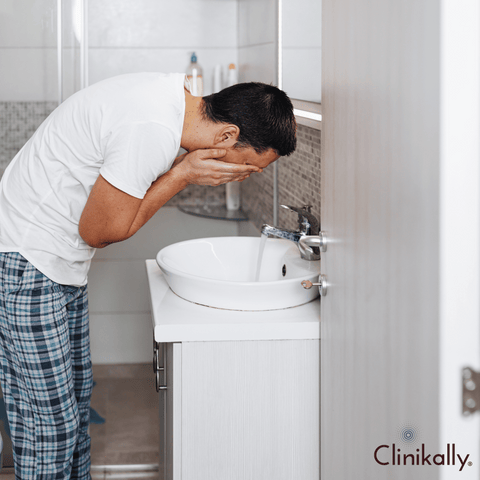
Maskne (mask-induced acne) prevention necessitates a daily routine that focuses on good hygiene, skincare, and mask maintenance. A daily routine to help prevent masks is as follows:
-
Cleanse Your face, moisturise, apply sunscreen, choose the right mask, and avoid makeup are all part of the morning routine.
-
During the day, take short mask breaks and stay hydrated.
-
The evening routine includes cleansing your face, moisturising, spot treatment, and changing or washing your mask.
-
Exfoliating your skin once a week can help remove dead skin cells and prevent clogged pores. Make use of a non-abrasive exfoliator.
General Tips:
-
Throughout the day, try not to touch your mask or your face.
-
Maintain proper mask hygiene by keeping your mask clean and free of allergens and irritants.
-
Consult a dermatologist if you have persistent or severe acne.
Keep in mind that consistency is essential to preventing masking. While this routine can be beneficial, it is also critical to tailor it to your skin type and any specific concerns you may have. If you develop mask-induced acne or other skin problems, see a dermatologist for personalised advice and treatment options.
Proper mask removal and storage

Proper mask removal and storage are critical for preserving the mask's effectiveness and preventing contamination. Here are some tips to help you safely remove and store your mask:
Mask Removal:
-
Wash Your Hands: Before touching your mask, properly wash your hands with soap and water for at least 20 seconds or use a hand sanitizer containing at least 60% alcohol.
-
Avoid Touching the Front: Avoid touching the front of the mask, which may be contaminated. Remove it with ear loops or ties.
-
Remove the Mask Carefully: Remove the mask from your face, beginning with the ear loops or ties. Pulling on the mask itself is not permitted.
-
Avoid Touching Your Face: Avoid touching your face after removing the mask, especially your eyes, nose, and mouth. Your hands could have come into contact with contaminants.
-
Dispose of Disposable Masks Properly: If you're wearing a disposable mask, dispose of it in a trash can with a cover. Rubbish is not acceptable to litter or leave lying around.
-
Wash Reusable Masks: If you are using a reusable mask, make sure to wash it after each use. Before wearing it again, follow the washing instructions and make sure it is not scorched.
Mask Storage:
-
Store in a Clean, Breathable Bag or Container: Keep your mask in a clean, breathable bag or container when it is not in use. This guarantees that it stays clean and helps shield it from contamination.
-
Label and Personalise: To avoid confusion if several people in your home use masks that look similar, label or personalise your mask or its storage container.
-
Keep It Separate: To prevent cross-contamination, keep your mask stored apart from other personal belongings like your phone, wallet, or keys.
-
Never Share a Mask: Never give a mask to someone else. To reduce the chance of infection, each person needs their own mask.
-
Replace Masks Frequently: If you are using disposable masks, change them out as soon as they get wet or obviously dirty. If reusable masks begin to show signs of wear or damage, they should be changed.
-
Wash Reusable Masks Thoroughly: Reusable masks should be washed on a regular basis with warm water and detergent, according to the manufacturer's care instructions.
-
Inspect for Damage: Before using a reusable mask, inspect it for signs of wear, such as holes or fraying ear loops. Damaged masks may not provide enough protection.
Exfoliation: Keeping your pores clean
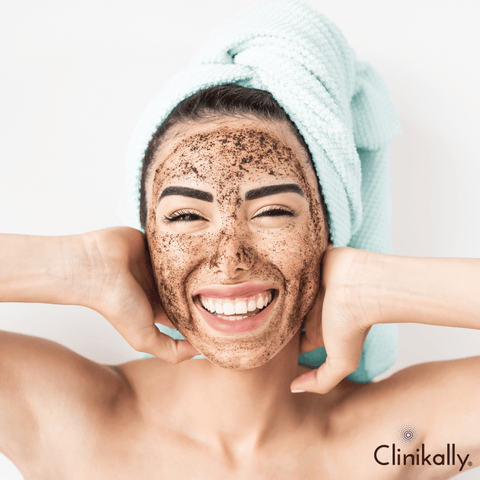
Exfoliation is a skincare procedure that removes dead skin cells, debris, and other pollutants that can block pores and cause acne or other skin problems. Exfoliation works as follows, with some tips for adding it to your skincare routine:
-
How Exfoliation Works: Exfoliation is the process of removing the top layer of dead skin cells from the skin's surface. This treatment can help keep pores clean and prevent blockages, which can lead to acne and other disorders. Exfoliation can be done in two ways:
-
Physical Exfoliation: This entails manually removing dead skin cells using a physical scrape or exfoliating tool. Facial scrubs, brushes, and cleansing pads are examples of common physical exfoliants. To avoid skin sensitivity, use physical exfoliants gently.
-
Chemical Exfoliation: Chemical exfoliation dissolves dead skin cells by using substances such as alpha hydroxy acids (AHAs), beta hydroxy acids (BHAs), or enzymes. These exfoliants function at the molecular level and are less abrasive on the skin than physical exfoliants. Glycolic acid, salicylic acid, and fruit enzymes are examples of common chemical exfoliants.
Guidelines for Exfoliation:
-
The Best Exfoliant to Use: Pick an exfoliant based on your skin type and concerns. If you have sensitive or acne-prone skin, a gentle chemical exfoliant such as salicylic acid may be better. AHAs such as glycolic acid may benefit dry or mature skin.
-
Frequency: The frequency of your exfoliation depends on the kind of exfoliant you are using and the type of skin you have. It is sufficient for most people to exfoliate one to three times a week. Excessive exfoliation can cause skin irritation and sensitivity.
-
Patch Test: Before using a new exfoliant, perform a patch test on a small area of your skin to ensure no adverse reactions occur.
-
Observe Directions: Carefully read and adhere to the manufacturer's instructions for your exfoliant, as certain products might call for particular applications or leave-on durations.
-
Be Gentle: Use physical exfoliants with caution to prevent skin damage. Use light pressure and avoid harsh scrubbing.
-
Sun Protection: Exfoliating your skin can make it more vulnerable to UV damage. Wear sunscreen whenever you go outside, especially after using chemical exfoliants.
-
Hydrate and moisturise: After exfoliating, apply a hydrating serum and moisturiser to keep your skin balanced and nourished.
-
Consult a Dermatologist: If you have specific skin concerns or are unsure about which exfoliant to use, seek personalised advice and recommendations from a dermatologist.
Soothing skin irritations caused by masks
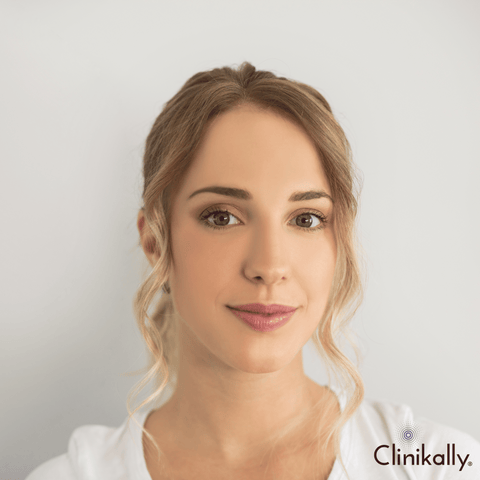
Mask-related skin irritations, also called masking or mask-related skin disorders, can be uncomfortable. Take mask breaks, keep your skin clean, moisturise, avoid makeup, spot treatment, use cold compresses, stay hydrated, choose the right mask, limit mask use, consult a dermatologist, keep your mask clean, choose a mask liner, and avoid using harsh skincare products, and reduce stress. Keep in mind that everyone's skin is different, and finding the best way to soothe and reduce skin irritations caused by masks may require some trial and error. Be patient and consistent with your skincare routine, and if necessary, seek individualised guidance and treatment options from a dermatologist.















